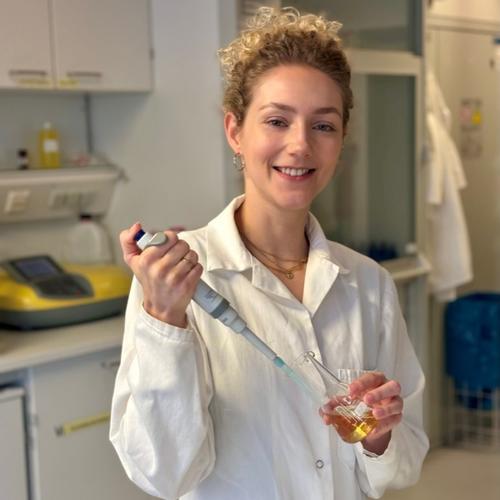Hannah Grabietz
The Biologist is conducting research at Humboldt University on a needle-like structure used by bacteria to inject toxins into host cells. She is investigating how the proteins to be injected are selected and what role mRNA plays in this process.
Aug 20, 2024
Vomiting and diarrhea – who has not experienced that? Such unpleasant symptoms can often be traced back to food poisoning, with one of the most common causes being a bacterium called Salmonella. Salmonella infections arise from consuming contaminated food and can range from mild discomfort to serious illness and potentially even proving fatal in severe cases. Every year, millions of people worldwide are affected by food poisoning caused by Salmonella. The bacterium poses a particular danger to the elderly and children. Compounding the issue is the increasing occurrence of multi-drug resistance due to the overuse or misuse of antibiotics in agriculture and medicine, often leading to prolonged or ineffective treatment. The exchange of antibiotic resistance genes between different bacterial species can render even newly developed antibiotics quickly ineffective. This necessitates the development of new strategies in the fight against bacterial infections. One new approach is the so-called anti-virulence strategy, which targets only the structures and mechanisms involved in infection without affecting the survival of the bacteria, thereby reducing the selective pressure for resistance development.
A potential target of this anti-virulence strategy is the so-called injectisome, a structure used by Salmonella and many other bacteria like a needle to inject toxins into human host cells, thus triggering infection. The injectisome uses a type III secretion system to export various proteins. Before it begins injecting toxins into the host cell, it secretes its own building blocks in a highly regulated self-assembly process, which then assemble into the needle. However, it is unknown how the needle components and later the toxins are selected from the thousands of proteins inside the cell and how they reach the type III secretion system.
In her dissertation project, Hannah Grabietz investigates the hypothesis that it is not the proteins itself that are directed to the injectisome, but rather the so-called mRNA, the blueprint containing the genetic information for protein construction. Hannah assumes that the mRNA is selected by a signal and directed to the injectisome, where the protein is then locally produced and directly secreted. To this end, she employs innovative techniques to label the mRNAs and utilizes high resolution microscopy, which allows the observation and tracking of individual mRNAs within the bacterial cell. Her goal is to understand the mechanism of protein selection in detail, providing ideas for precisely blocking this process. In line with the antivirulence strategy, this aims to prevent the formation of the needle and the injection of toxins, rendering the bacteria harmless without killing them and thereby preventing further resistance development.
Further Information
https://www.molmicro.hu-berlin.de
grabieth@hu-berlin.de

